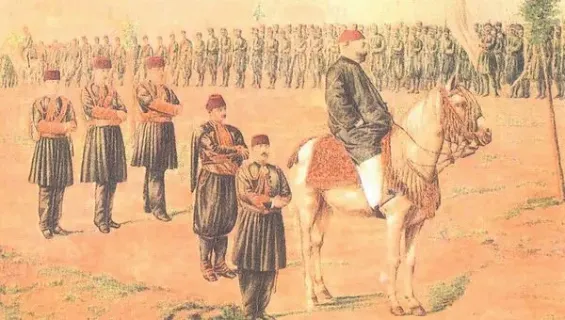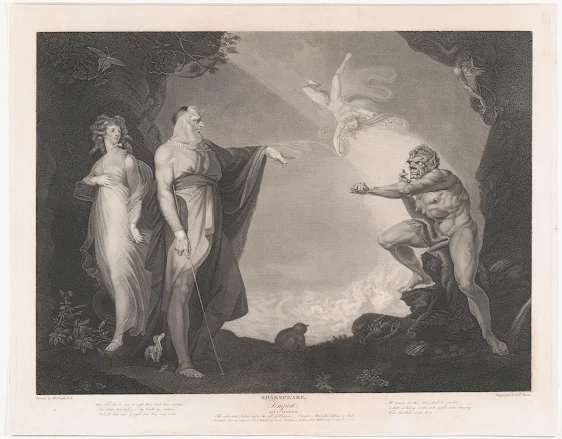Storming the
Isles: Caesar's Invasion of Britain
In 55 and 54 BCE, Julius Caesar launched two military campaigns against
Britain. Although Caesar achieved only limited success and failed to establish
a permanent Roman presence in the British Isles, he forged treaty relations
with numerous British tribes. He brought Britain into the sphere of Roman
political ambitions.
nti-Roman revolt by the Veneti of Armorica
(modern Brittany) in 56 BCE, which likely received some support from Britain,
prompted Julius Caesar to shift his focus northward. Venturing into Britain, an
island seen as impossibly distant beyond “the bounds of the ocean,” would have
earned him immense prestige. However, political difficulties delayed his
invasion plans for a year. Finally, in 55 BCE, Caesar prepared to cross the
Channel with a small expeditionary force. His main adversary was
Cassivellaunus, probably the king of the Catuvellauni, a tribe expanding from
its base at Wheathampstead in Hertfordshire to dominate much of southern
England.
Preparation
Caesar received envoys from
several British tribes eager to show their submission and avoid having their
lands invaded. He dispatched a small reconnaissance force under the tribune
Volusenus to scout suitable landing beaches and sent a diplomatic mission under
the Gallic chieftain Commius to rally pro-Roman opinion. Unfortunately, both
missions failed—Volusenus was unable to locate a sheltered harbour for the
Roman fleet, and Commius was promptly arrested.
On August 26, Caesar set sail
with a force composed of the Seventh and Tenth Legions. The cliffs and beaches
around Dover were occupied by British defenders, forcing the Roman ships to run
aground near Deal in Kent. The legionaries had to disembark in relatively deep
waters under a constant hail of missiles. Although the legions managed to
establish a beachhead, disaster struck four days later when a severe storm
scattered the ships bringing over 500 cavalry reinforcements, and badly damaging
many of the landing craft. Deprived of cavalry support, Caesar was vulnerable,
and after the Seventh Legion was severely mauled in an ambush, he chose to
declare the expedition a success and returned to Gaul, accompanied by a number
of British hostages.
A New Campaign
Preparations soon began for a
new expedition, as Caesar had learned valuable lessons from the relative
failure of his first invasion into Britain. This time, he brought five
legions—amounting to over 30,000 men—and around 2,000 cavalry. The cavalry was
a critical component in countering the battle tactics of the Britons, who,
unlike their counterparts in mainland Europe, still used chariots in battle to
harass infantry units lacking mounted support.
On July 6, 54 BCE, Caesar set
off for Britain once more. His navy of 800 ships landed near Deal, this time
unopposed, apparently because the Britons were so intimidated by the size of
the force that they chose not to resist. However, the Roman fleet was again
battered by a serious storm. The ten-day delay in building a rampart extensive
enough to beach their remaining naval force encouraged the Britons, who then
offered a more effective defending under the leadership of Cassivellaunus.
The Romans won a series of
engagements, capturing a hillfort at Bigbury near Canterbury, overcoming an
attempt to entrap a Roman foraging force, and pushing on toward the Thames.
Diplomatic pressure also began to tell, as Caesar had with him Mandubracius of
the Trinovantes, one of Cassivellaunus’s arch-enemies. Some British chieftains,
fearing that Cassivellaunus might use success against Caesar to increase his
power, began to waver in their support for the campaign against the Romans. The
capture of Cassivellaunus’s chief stronghold—likely the oppidum at
Wheathampstead—led to a desperate attempt to stir the Kentish tribes into a
final uprising against Caesar. This attempt was to no avail, and Cassivellaunus
sued for peace. Caesar readily accepted, having already decided not to
overwinter in Britain, fearing a revolt might break out in Gaul during his
absence. He accepted British hostages and fixed a tribute to be paid by
Cassivellaunus before returning across the Channel in mid-September. The
Trinovantes became, in effect, a client kingdom of Rome, and Cassivellaunus was
forbidden to interfere in their territory. Whatever his intentions regarding a
third and more decisive invasion of Britain might have been, Julius Caesar was
distracted from taking any action until 51 BCE by a major uprising in Gaul and
later by his involvement in the Roman civil wars, which led to his appointment
as Dictator in Rome in 47 BCE.

… Britons dye themselves
with woad… and as a result their appearance in battle is all the more
daunting.”
JULIUS CAESAR, THE GALLIC
WARS, .47 BCE
Attempts by Augustus
Augustus, Caesar’s adoptive
son and successor and the first Roman emperor, made plans to invade Britain at
least twice, in 34 BCE and 26 BCE. However, suspected revolts elsewhere in the
Empire caused him to call off both expeditions. Instead, the Romans, who
regarded "the whole of the island as Roman property" according to the
historian Strabo, supported client-kings like Tincommius and Verica, who ruled
over a Belgic kingdom in southern England. This support was aimed at countering
the growing power of the Catuvellauni, who overran the Trinovantian capital of
Camulodunum (Colchester) around 9 CE. By involving themselves in British
politics, the Romans maintained their influence on the island.
Conquest and Resistance
The Romans began their
conquest of Britain in 43 CE. After initial successes, they faced persistent
and bitter resistance in Wales and the north, as well as revolts in the south.
Forty years after the landing, however, their armies stood on the borders of
the Scottish Highlands, the furthest north they would reach.
The immediate pretext for the
Roman invasion of Britain was the appeal by Verica, the exiled king of the
Atrebates, to Emperor Claudius for help in restoring him to power. In response,
four Roman legions—comprising more than 20,000 men—embarked for England in late
April 43 CE. Under the command of Aulus Plautius, the Claudian invasion force
established its main base at the sheltered harbor of Richborough in eastern Kent
and began advancing westward. The Britons, led by Caratacus and Togodumnus,
leaders of the Catuvellauni tribe, resisted the Roman advance but were
eventually pushed back to the Thames. Finding a crossing point, the Romans
engaged in fierce fighting, resulting in the death of Togodumnus. A pause in
the campaign allowed for the arrival of Emperor Claudius himself, who took
personal command. With Claudius leading, the Romans captured the capital of
Camulodunum (Colchester). Following this success, Claudius returned to Rome,
celebrating the glory of his new conquest.
Roman Expansion in Britain
Over the next four years
following the Claudian invasion, the Romans expanded their control over
Britain. They absorbed the remnants of the Catuvellaunian kingdom, while future
Roman emperor Vespasian subdued resistance in the south and southwest. By around
47 CE, the Romans had secured a defensive line roughly along the future Fosse
Way, extending from the Devon coast to Lincolnshire. They established a network
of forts to solidify their control.
The Romans then turned their
attention westward into Wales, where they encountered vigorous opposition from
Caratacus, who had escaped and was leading renewed British resistance. In 51
CE, Caratacus was finally captured after seeking refuge with Cartimandua, queen
of the Brigantes, who subsequently handed him over to Roman authorities.



.jfif)





.png)






.jpeg)
.jpeg)







.png)

.png)